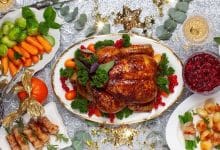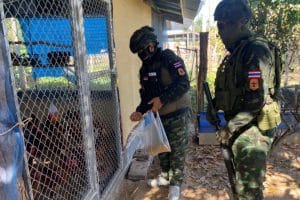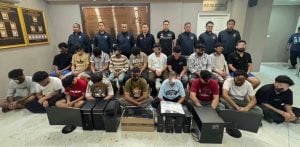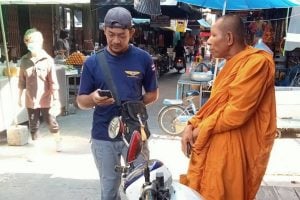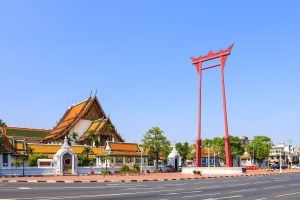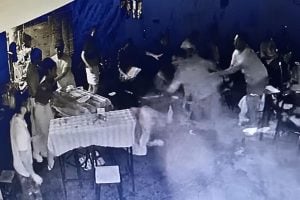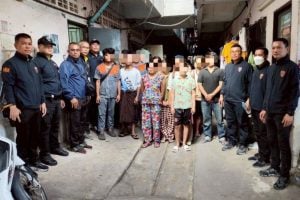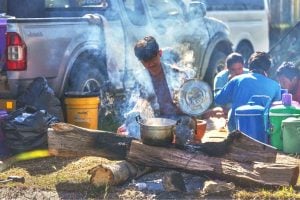Christmas in Liturgical Splendor: Vestments highlighting the joy of the season
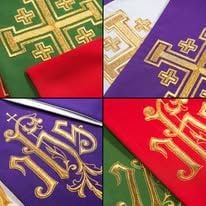
Colour and Symbolism: A Symphony of White and Gold
The primary colour associated with Christmas vestments is white, often interwoven with gold or silver threads. White symbolises purity, light, joy, and new beginnings – all themes deeply resonant with the birth of Christ. As the “light of the world” (John 8:12), Christ’s arrival banishes the darkness of sin and ushers in an era of hope and redemption. Gold, representing royalty, divinity, and the glory of God, further underscores the significance of the Incarnation.
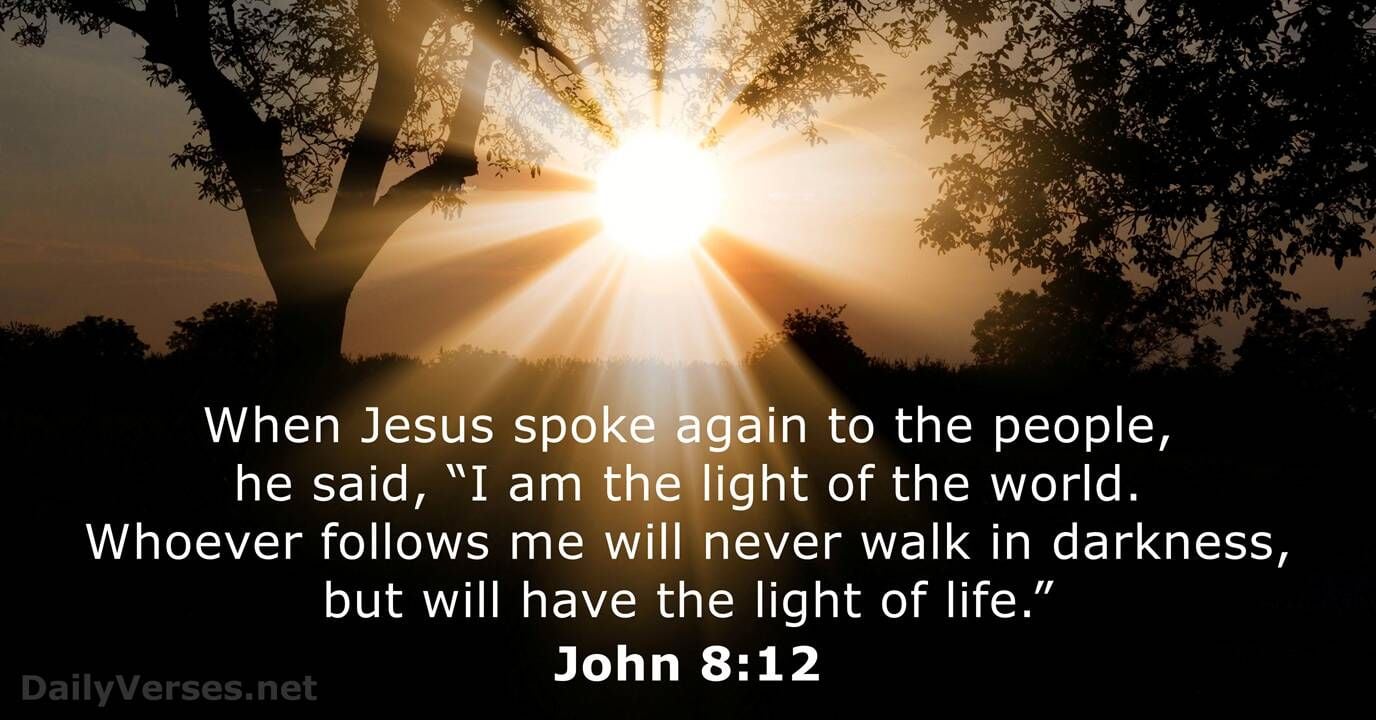
The interplay of white and gold in Christmas vestments creates a visual tapestry that evokes the celestial radiance and divine majesty surrounding the Nativity. The shimmering threads capture and reflect light, creating a sense of wonder and awe that invites the faithful to contemplate the profound mystery of God becoming man.
Ornamentation: Telling the Christmas Story Through Embroidery
Vestments are frequently adorned with intricate embroidery that depicts key scenes and symbols from the Christmas narrative. These visual elements serve as catechetical tools, reinforcing the message of the Gospel and inviting deeper reflection.
- The Nativity Scene: The depiction of Mary, Joseph, and the infant Jesus in the manger is a central motif. Often, angels, shepherds, and the Magi are included, representing the diverse groups who came to worship the newborn King. The presence of the ox and the donkey, traditional symbols of humility and service, further enriches the scene.
- Angels: Angels, as messengers of God, frequently appear on Christmas vestments, announcing the birth of Christ to the shepherds and proclaiming “Glory to God in the highest, and on earth peace, goodwill toward men!” (Luke 2:14). Their ethereal forms and outstretched wings symbolize the divine realm and the heavenly chorus that accompanied the Incarnation.
- The Star of Bethlehem: The radiant star that guided the Magi to Bethlehem is another prominent symbol. Its five points often represent the five wounds of Christ, foreshadowing his sacrificial death for the salvation of humanity. The star’s light symbolizes divine guidance and the revelation of Christ to the Gentiles.
- Holly and Ivy: These evergreen plants, traditionally associated with Christmas, symbolize eternal life and the enduring nature of God’s love. The sharp thorns of holly remind us of Christ’s suffering, while the red berries represent his blood shed for our redemption. Ivy, clinging to structures for support, symbolises the dependence of the faithful on Christ.

Styles and Forms: Reflecting Liturgical Tradition
The specific styles and forms of Christmas vestments vary according to liturgical tradition and individual preference. However, certain key garments are commonly used:
- The Chasuble: The outermost vestment worn by the priest during the Eucharist, the chasuble is a symbol of charity, the yoke of Christ, and the priestly office. Christmas chasubles are often made of luxurious fabrics such as silk, brocade, or velvet, and may be adorned with elaborate embroidery or appliques.
- The Stole: A long, narrow band worn over the shoulders, the stole is a symbol of priestly authority and service. Deacons wear the stole diagonally across their chest, while priests wear it vertically. Christmas stoles are typically white or gold, and may feature embroidered symbols or patterns.
- The Dalmatic: The vestment worn by deacons, the dalmatic is a wide-sleeved tunic that symbolizes joy and service. Christmas dalmatics are often made of rich fabrics and may be decorated with stripes or other embellishments.
- The Cope: A large, semi-circular cloak worn during processions and other liturgical celebrations, the cope is a symbol of solemnity and dignity. Christmas copes are often made of heavy fabrics and may be adorned with elaborate embroidery or hoods.

Beyond the Vestments: Enhancing the Christmas Liturgy
While vestments are a prominent feature of the Christmas liturgy, they are just one element of a broader effort to create a sacred and celebratory atmosphere. Other factors that contribute to the overall experience include:
- Music: Christmas hymns and carols, filled with joyful melodies and uplifting lyrics, fill the church with the spirit of the season.
- Flowers: Poinsettias, lilies, and other seasonal flowers adorn the altar and sanctuary, adding beauty and fragrance to the space.
- Candles: The warm glow of candles symbolises the light of Christ and creates a sense of intimacy and reverence.
- The Crib: The Nativity scene, often displayed prominently in the church, serves as a visual reminder of the humble origins of Christ and the miracle of the Incarnation.
Conclusion: A Celebration of Divine Love
Christmas vestments, with their rich colours, intricate embroidery, and symbolic forms, are an integral part of the liturgical celebration of the birth of Christ. They serve as visual reminders of the joy, hope, and redemption that the Incarnation brings to the world. As the clergy don these sacred garments, they become living icons of the Christmas story, inviting the faithful to enter into the mystery of God’s love made manifest in the person of Jesus Christ. The vestments, combined with music, flowers, candles, and the Nativity scene, create a multi-sensory experience that elevates the Christmas liturgy to a truly profound and unforgettable celebration. https://chasubles.com/
Latest Thailand News
Follow The Thaiger on Google News:
